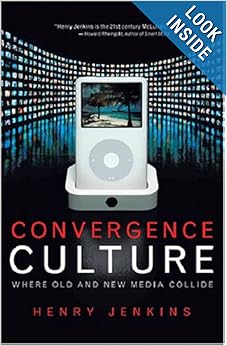This is a question that I've had asked myself back when I was in college at Auburn University. Upon reading the book "Convergence Culture" by Henry Jenkins, I began to ask myself whether or not it is possible to use modern devices in the class room. Many Professors at Auburn told us that Wikipedia was not a reliable source of information, but I had a few who told me that it was just fine, it was a source of knowledge just like a book. It failed to meet many professor's approval because it was in fact digital, not hard back. The American school system is bad, and it needs a change for it to succeed. The way that children and students interact with the world has changed drastically, and yet schools remain exactly how they were back in the late 1800s. So what changes are being made?
Well, to provide an explanation of what school were like, one needs to watch the video "Mr. Dancealot" to get an understanding of what the current theme of a classroom is. In this video, we have a Professor who is teaching dance class. Sounds fun right? Well, he has no interaction between himself and his students, or even students to students. At one point in the video a student claims that it would be fun if they actually got to do any of what he was teaching. One student even tried to get up and make sure he got the moves to the Fox Trot correctly, at which point "Mr. Dancealot" got unto him saying "I'm trying to teach a class here!". At the end, the students are at the final exam and starring at each other with all the information they have gathered during the semester, but no knowledge of how to apply it. This video shows us what non interaction in the classroom is like, and how it is a negative. So how do we change that?
In her video "Harness Your Student's Digital Knowledge", Davis' describes a way of sparking that interaction. At sometimes during her class, students will get up and teach the class themselves, guiding their fellow students in what lesson plan they are in that day. This allows for students to not only interact with each other, but also to help solidify the students own knowledge of the material. She also prescribes to the idea that all the information should not be handed to a student, saying "I don't have to define everything, and I shouldn't." Saying this, she is meaning that when she presents a word to students that they don't know, they have the ability to look it up, expanding their knowledge in multiple ways.
The main cusp of this comes from the video "Teaching in the 21st Century". Here is a video that describes how the classroom is not how we remember it, and that teaching is evolving to the point that technology must be used in it. In the video, Robert's believes that Teaching in the 21st Century means to be a facilitator, a guide, a filter and engager for the students towards the information. To him, the information is already there at the student's finger tips, via sites like Wikipedia and You Tube, and that they need someone to help contextualize the information rather then present it. A teacher must also make their class room engaging, but not by making it entertaining. Entertainment is not engaging, and therefore students will not learn. A teacher will want to ensure that their students are not bored or frustrated with the course, but rather have work that engages their mind and allows them to explore the information. This is important to understand, as those that are wanting to become teachers are the ones that will be bringing this change full front. We, as students, have to empty our minds of what we think teaching is about, and learn how to handle the ever growing area known as "the class room".
So where do we see things like You Tube and Blogs appear in the class room? One of the concepts using this is called "Flipping the Classroom". The "flipping" part comes with the idea that students are given a video to watch at home, and the video is the teacher giving the lecture. This allows students to pause, rewind, and take the lecture at their own pace. The "homework" we are all use to is then did in class, with all the students have had watched the lecture at their own pace, and hopefully having a better understanding. Students are also encouraged to bring questions they have to class, or if they looked something up they can bring that to class as well. Mixing this concept with blog posts, wiki pages and You Tube channels, as seen in "The Networked Student", we can see how teaching has evolved from simple chalkboard and chalk.

This comment has been removed by the author.
ReplyDeleteTeaching is evolving rapidly. When we get into our classrooms, we will be responsible for more than just teaching our students materials for tests. We will be tasked with molding our students into responsible global citizens, and this can be a complicated task. That is why technology is so important. Technology is the tool that connects us to the global community. As our society pushes forward more and more with new technologies, teachers have to be able to teach students how to utilize these technologies responsibly.
ReplyDelete"Teaching in the 21st Century". The punctuation mark should always go inside the quotation marks. Be sure to proofread your blog posts because this occurred several times in this post.
ReplyDeleteOverall, good job. Be sure to include working links and pictures with alt and title modifiers in every blog post.